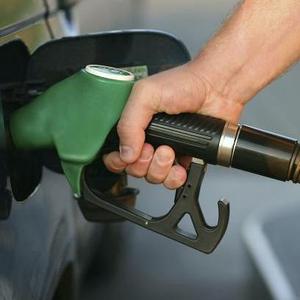New pump labels in EU provide clarity on biofuels content

October 12, 2018
BY Ron Kotrba
The EU introduced a new, harmonized set of fuel labels Oct. 12 to give drivers better information on the suitability of fuels for their vehicles throughout Europe. The labels will help avoid misfueling and inform drivers on the environmental impact of their fueling choice, according the European Commission.
The growing diversity of fuels on the European market—numerous blends of ethanol, biodiesel, synthetic diesel, and a variety of gaseous fuels such as hydrogen, compressed natural gas, liquid natural gas and liquid propane gas—has created the need for clearer information on the fuels sold at fuel stations, the EC stated Oct. 12.
Ethanol blends for spark-ignition (“gasoline”) engines are now designated with a circle encompassing an “E” and a numeral to represent the blend concentration of ethanol, such as E5, E10 and E85.
Advertisement
Advertisement
Biodiesel blends for compression-ignition (“diesel”) engines are now designated with a square encompassing a “B” and a numeral to represent the blend concentration of biodiesel, such as B7, B10, B30, B50 and B100.
Synthetic diesel fuels are also designated with a square in which the letters “XTL” are displayed.
Gaseous fuels are designated with a diamond in which the abbreviations “CNG,” “H2,” “LNG” and “LPG” are used.
The French Federation of Oilseed and Protein Producers (FOP) said the new labeling requirements are in line with the actions led by the organization to reinforce an essential outlet for oilseed producers, “and make visible the green fuel from our territories,” FOP stated in a press release. “It also demonstrates the contribution of the French vegetable oils and proteins sector to the energy and ecological transition.”
Advertisement
Advertisement
FOP also noted that, in addition to B7, consumers will soon be able to choose B10 at the pump. “Authorized last June by the government, this new fuel, which contains up to 10 percent of biodiesel, symbolizes the ongoing efforts of the industry to participate in the decarbonization of transport, and accelerate the development of sustainable mobility,” FOP stated.
"This display of B7 and B10 at the pump is a positive signal for both French farmers and motorists,” said Arnaud Rousseau, president of the FOP. “By refueling B10, the French can choose to give a boost to French agriculture and make a gesture for the environment.”
For more information on the labeling requirements, click here.
Related Stories
Global digital shipbuilder Incat Crowther announced on June 11 the company has been commissioned by Los Angeles operator Catalina Express to design a new low-emission, renewable diesel-powered passenger ferry.
ATR and French SAF aggregator ATOBA Energy on June 19 signed a memorandum of understanding (MOU) to explore ways to facilitate and accelerate sustainable aviation fuel (SAF) adoption for ATR operators.
Argent Fuels, a leading provider of carbon-saving fuels in the UK, is accelerating its efforts to support a greener future. The expansion of its High Blend Biodiesel will supply to bus, coach, HGV fleets and rail in the south of the UK.
Sprague Operating Resources LLC on June 24 announced it has been selected by the New York City Department of Citywide Administrative Services to supply renewable diesel for its marine fleet, including the iconic Staten Island Ferry.
On June 17, the NYC Department of Citywide Administrative Services and the Department of Transportation announced the start of the Staten Island Ferry’s transition to renewable diesel, marked by the delivery of the first barge of fuel.
Upcoming Events










